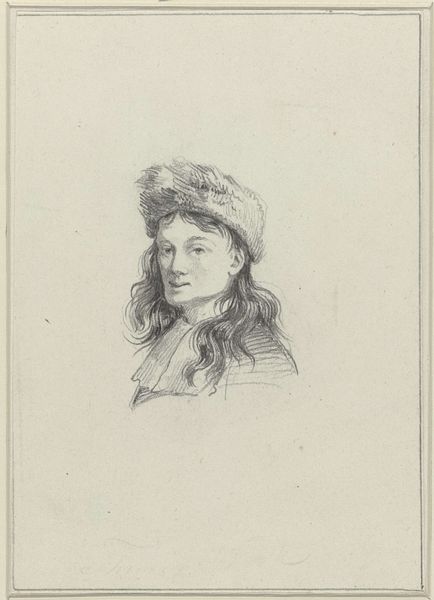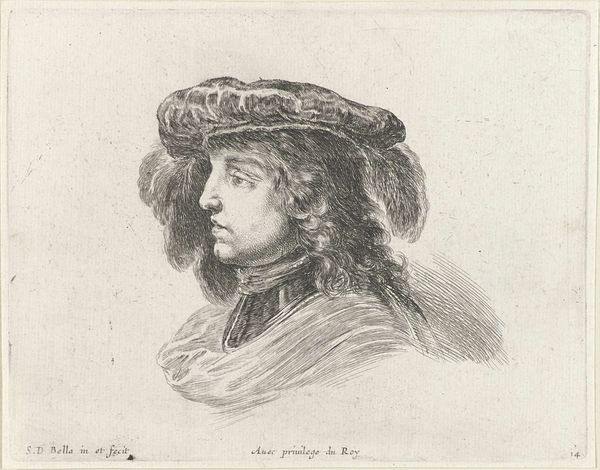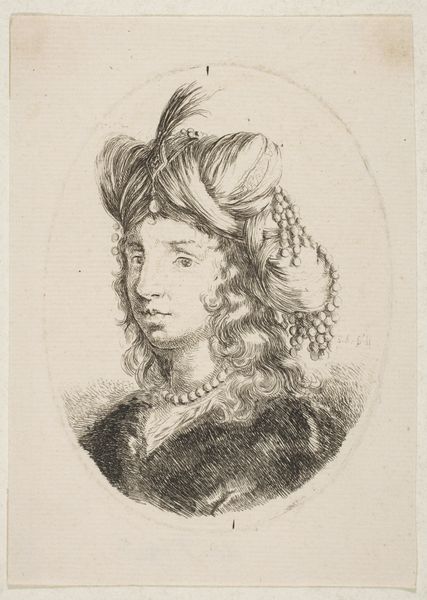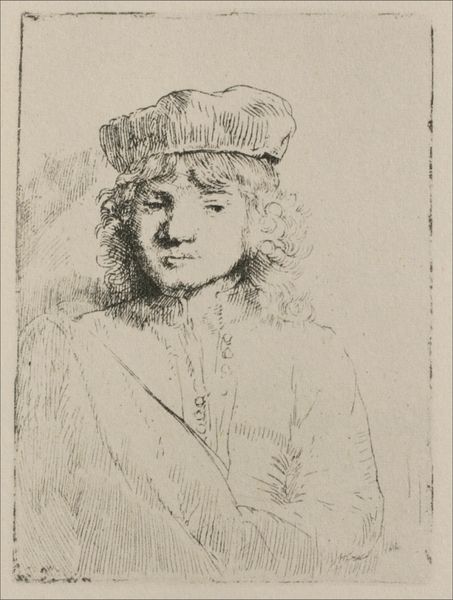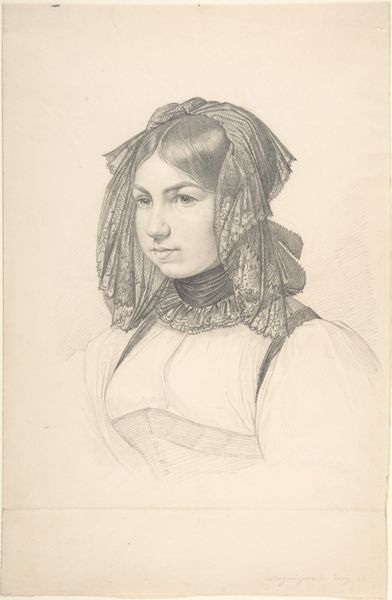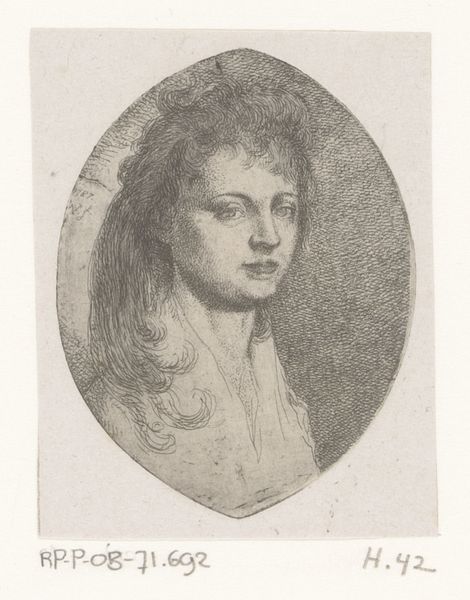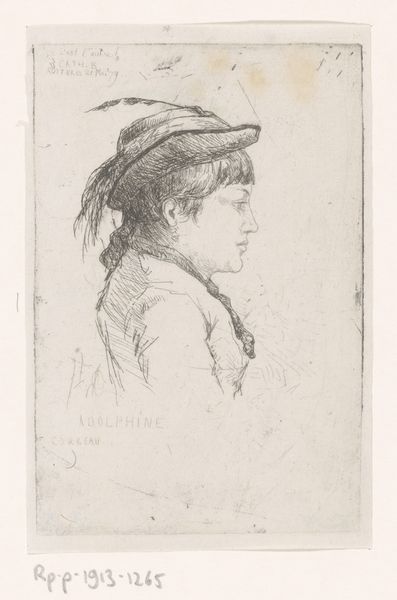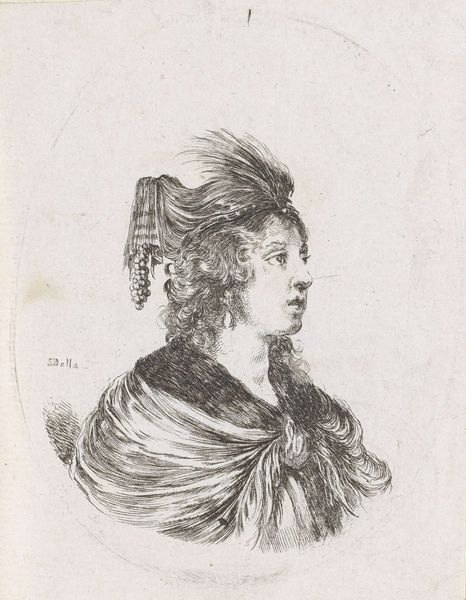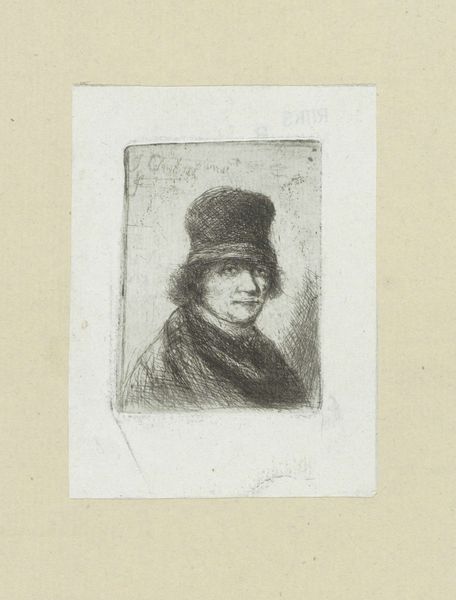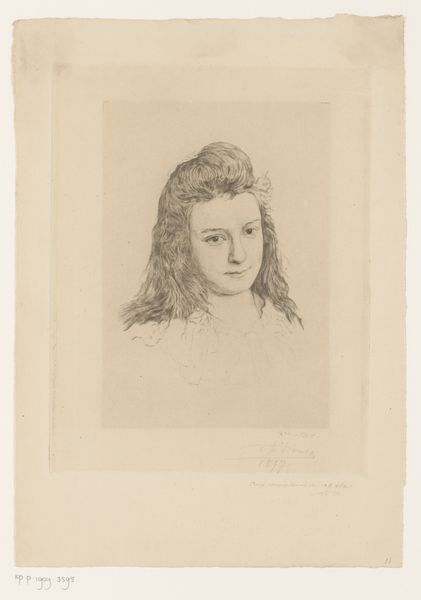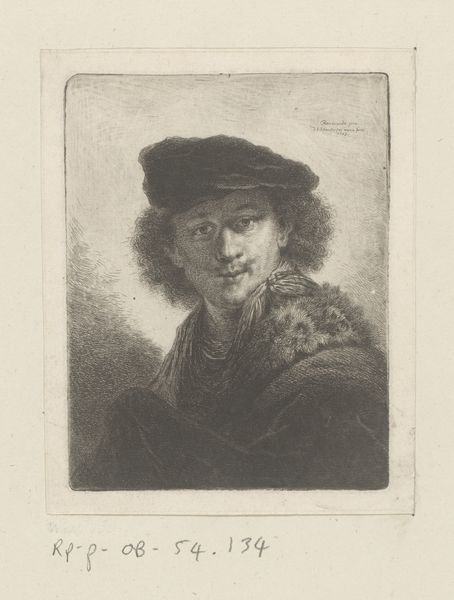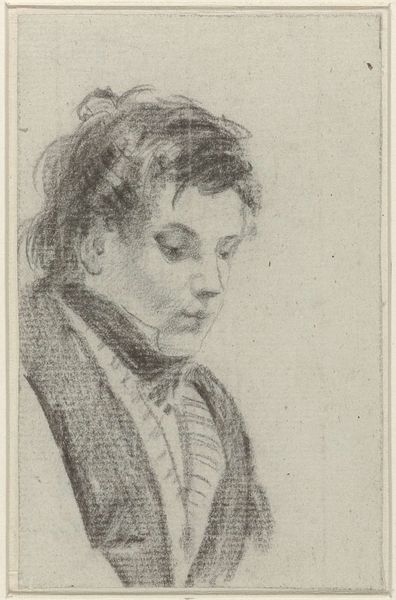
drawing, engraving
#
portrait
#
drawing
#
engraving
Dimensions: height 70 mm, width 57 mm
Copyright: Rijks Museum: Open Domain
Curator: Welcome! We’re standing before a fascinating engraving titled "Portret van Thomas Wijck," dating from approximately 1832 to 1900, attributed to Adolphe Frédéric Nett, at the Rijksmuseum. Editor: There's something almost haunting about its directness. The stark lines and monochrome palette contribute to a rather intense, reflective mood, wouldn’t you agree? Curator: Precisely. The piece showcases Nett's skillful manipulation of line to create depth and texture, notice particularly the detailed cross-hatching used to define the facial features. We must delve into how such simple, raw materials render a recognizable person. Editor: Raw indeed! Think about the engraver’s labor: the relentless, minute gestures with burin on copper or steel, transforming base metal into a field for artistic expression. It emphasizes process, from conception to material execution, highlighting the socio-economic structures that support this work. Curator: Granted. Yet the focal point remains the composition itself, wouldn’t you say? The hat, its fur rendered with astonishing fidelity. It acts almost as a halo framing his face, contrasting textures—smooth skin against rough fur—and how these elements invite closer inspection. Editor: And who gets to wear the fur, and who toils to make that possible? Luxury isn't extracted from a vacuum but from material processes and, very often, exploitative labor structures of extraction and crafting. Curator: These concerns provide alternate, valid perspectives on the work. Nevertheless, consider how Nett utilizes hatching to not only model form but also to suggest the inherent personality of Wijck, conveying character with seemingly limited resources. Editor: By considering how class and consumption patterns dictate who gets memorialized. Perhaps an examination of who, within a portrait such as this, enjoys visibility whilst labor often remains in the dark is central? Curator: Certainly something to consider when observing a piece that reflects skill and complexity as a physical item, but I choose instead to remain focused on how art reflects more elusive concepts, like inner life. Editor: In that case, may one view life through material objects? A good point to consider after contemplating the object.
Comments
No comments
Be the first to comment and join the conversation on the ultimate creative platform.
